Orienteering Clue Symbols
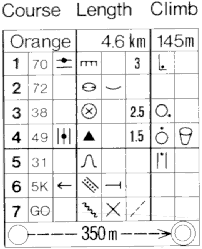 Although clues are always written out in English (or the local language) for beginners' courses, clues for intermediate and advanced courses are given as symbols in a table format. To the uninitiated, this can look like hieroglyphics, but the system is quite simple to master and is more compace and specific than a written description - and has the advantage of being easily understood the world over.
Although clues are always written out in English (or the local language) for beginners' courses, clues for intermediate and advanced courses are given as symbols in a table format. To the uninitiated, this can look like hieroglyphics, but the system is quite simple to master and is more compace and specific than a written description - and has the advantage of being easily understood the world over.
The example shown here begins with a course designation (in North America, Orange refers to the intermediate level course). The second entry in the heading is the length of the course (in kilometers or meters), which is always measured as the minimum distance an orienteer would have to travel to complete the course (in other words, along the straight line except where an obstacle such as a lake or out-of-bounds area forces a deviation from the line. The third entry in the heading is the climb, in meters, as measured along the "ideal" route (as determined and measured by the course setter). Each succeeding line in the clue list describes the location of a control, and the final line describes the approach to the finish from the final control.
For example:

column a: The control number (in this case, the fourth control)
column b: The control code appearing at or near the flag (49)
column c: Which of several similar features (the middle one)
column d: The feature (the boulder)
column e: Details of the feature's appearance
column f: Dimensions of the feature (1.5 m high)
column g: Location of the control marker (the north side)
column h: Other information (drinks available)
Column C: Which feature?
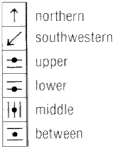
Back to the example.
Column D: The Feature
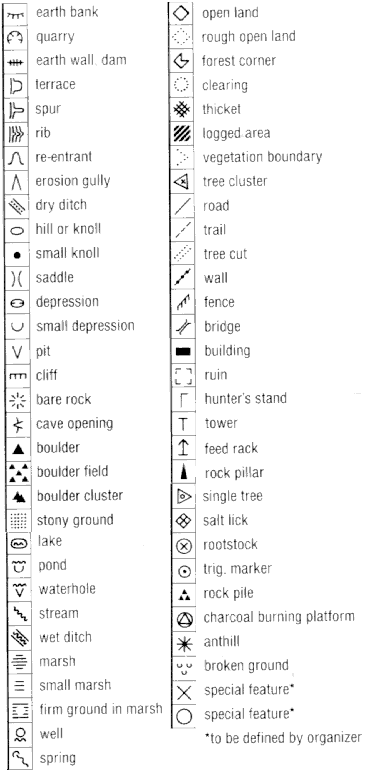
Back to the example.
Column E: Details at the feature
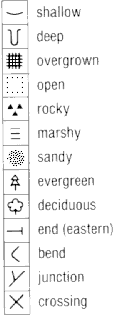
Back to the example.
Column F: Dimensions

Back to the example.
Column G: Location of the Marker
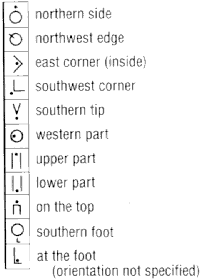
Back to the example.
Column H: Other Information
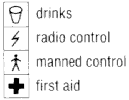
Back to the example.
Last control to the Finish
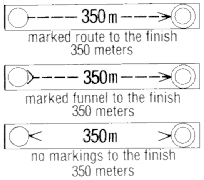
Back to the example.
Back to Orienteering Home Page or to the example of an orienteering course. Although clues are always written out in English (or the local language) for beginners' courses, clues for intermediate and advanced courses are given as symbols in a table format. To the uninitiated, this can look like hieroglyphics, but the system is quite simple to master and is more compace and specific than a written description - and has the advantage of being easily understood the world over.
Although clues are always written out in English (or the local language) for beginners' courses, clues for intermediate and advanced courses are given as symbols in a table format. To the uninitiated, this can look like hieroglyphics, but the system is quite simple to master and is more compace and specific than a written description - and has the advantage of being easily understood the world over.







